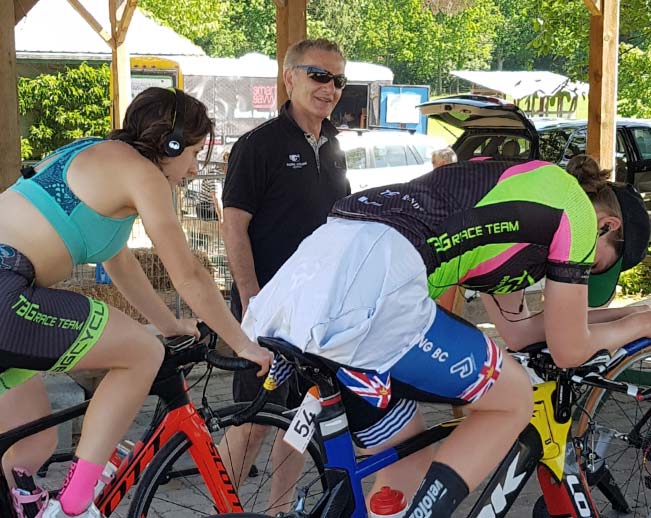Warm-up and Cool Down

What are the benefits of a warm-up?
Performance during training and racing will improve with an appropriate warm up. There is no doubt that time spent on warming up and cooling down will not only improve your performance, but also accelerate the recovery process and prevent injuries. It is important to have your own personalized warm-up and cool done routine experimented and developed during training.
In general your warm-up routine should include two main segments. A: Muscular warm-up; B: Nervous system activation. Short warm up for longer races and a longer warm up for shorter races must be considered. Some of the physiological effects are widely published and researched, and can include: increased speed of contraction and relaxation of warmed muscles; improved economy of movement because of lowered viscous resistance within warmed muscles; facilitated oxygen utilization by warmed muscles, because hemoglobin releases oxygen more readily at higher muscle temperatures; facilitated nerve transmission and muscle metabolism at higher temperatures – a specific warm up can facilitate motor unit recruitment required in subsequent all out activity; increased blood flow through active tissues as local vascular beds dilate, increasing metabolism and muscle temperatures.
Warm up example for a Road Race:
- Duration: 20-30min
- Start working through the gears with very low intensity/cadence and build up gradually increasing the cadence before shifting to the higher gears. Start with 39×19-18-17-16, then get into the big ring and follow the same routine as the small ring 53×18-17-16
- 1-2×3-5min (2-4km) at race pace (~90%MAP) rest 2min
- 5min easy small ring, finish the warm-up 10-20min before the start of the race
Warm up example for ITT, TTT, Criterium Prologue
- Duration:35-55min progressive
- Start working through the gears with very low intensity/cadence and build up gradually increasing the cadence before shifting to higher gears. Start with 39×19-18- 17-16-15. When you get into the big ring make sure you ride enough in each gear until you feel comfortable 53×18-17-16-15.
- 5min easy
- 2-3×1-4min (1-3km) at race pace (90-95%MAP) rest 1-2min
- 10 minutes easy spin, small ring,
- finish the warm-up 15-20min before start of the race
Environmental Effect on Warm up
Weather conditions will affect your warm-up and the outcome. For example if you are warming up in extreme heat your warm-up should be shorter, but long enough to provide the quality without increasing the core temperature.
In cold and wet weather the key is to stay warm and dry, and not to forget to properly hydrate and replace fuels during the warm-up. This also applies if you use a trainer indoors for your warm-up.
A quality warm up will have a positive affect on the race outcome – planning the logistical part of the warm-up is the key to its quality.
What are the benefits of a cool down?
An appropriate cool down will:
- Aid in the dissipation of waste products – including lactic acid
- Reduce the chances of dizziness or fainting caused by the pooling of venous blood at the extremities
- Reduce the level of adrenaline in the blood
Cool Down (warming down) should consist of the following:
- 15-25 minutes, small gear, gradually reduce the pressure on the pedals, lower the intensity and bring the heart rate to resting zones by end of the cool down.
- Longer cool down is required for intense training and racing, this process allows a decrease in core temperature, heart rate and blood pressure, and it facilitates active removal of waste products.
- 5 to 10 minutes moderate static stretching exercises are ideal to improve or maintain range of motion and flexibility.
By Houshang Amiri
